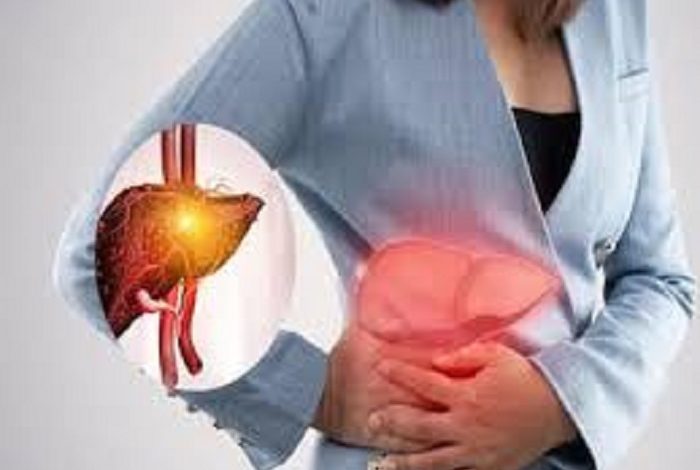Fatty Liver Disease Reversal Possible with Two Readily Available Medications

Nonalcoholic fatty liver disease (NAFLD) has quietly become one of the most common chronic liver disorders worldwide. For many people it’s simple fat in the liver (steatosis); for others it progresses to inflammation and scarring (nonalcoholic steatohepatitis — NASH) that can ultimately lead to cirrhosis, liver failure, or liver cancer. The good news is that while lifestyle change (weight loss, healthy diet, exercise, and controlling diabetes and lipids) remains the cornerstone of care, high-quality research in the past 15 years has shown that two readily available classes of medications — pioglitazone (a long-used diabetes drug) and GLP-1 receptor agonists (such as semaglutide) — can actually resolve NASH or markedly reduce liver fat and fibrosis in many patients. This article explains the evidence, how these medicines work, who may benefit, and the safety and practical considerations you should know.
Quick summary (TL;DR)
- NAFLD/NASH is common and tied to obesity, insulin resistance, and metabolic syndrome. Early disease can be reversible.
- Pioglitazone (a thiazolidinedione) has randomized-trial evidence showing improvement in liver inflammation and fibrosis in patients with biopsy-proven NASH. It’s widely available as an inexpensive oral pill.
- GLP-1 receptor agonists (GLP-1 RAs) — injectable medicines used for diabetes and weight loss (e.g., semaglutide) — reduce liver fat, improve liver enzymes, and in trials have increased rates of NASH resolution; phase-3 data show meaningful fibrosis improvement with semaglutide in metabolic-dysfunction–associated steatohepatitis.
- Neither medication replaces lifestyle change; they are tools that, when used appropriately, can substantially increase the chance of reversing liver disease. Guidelines now recognize these medicines as options in selected patients.
What is being reversed — fatty liver vs. NASH vs. fibrosis
“Fatty liver disease” is an umbrella term. It ranges from simple steatosis (fat accumulation in liver cells) — which is often reversible with weight loss — to NASH, where fat is accompanied by inflammation and cell injury, and onward to fibrosis (scar tissue) and cirrhosis. The word “reversal” needs context: reduction of liver fat and inflammation and even regression of fibrosis are possible, especially when disease is identified early and treated aggressively. The stronger the scarring (advanced fibrosis/cirrhosis), the harder it is to fully reverse; but meaningful improvement is still a realistic goal in many patients.
Medication 1: Pioglitazone — what the evidence shows
What it is. Pioglitazone is an oral medication in the thiazolidinedione class used for type 2 diabetes for decades. It improves insulin sensitivity.
Why it helps the liver. Pioglitazone reduces hepatic insulin resistance and changes how fat is distributed and metabolized — lowering liver fat and inflammation. It acts on pathways that modulate fat storage and inflammatory signaling in the liver.
Clinical evidence. Randomized, placebo-controlled trials have shown that pioglitazone significantly improves histologic features of NASH. A key early trial (and several subsequent analyses and meta-analyses) demonstrated improvements in steatosis, inflammation, and ballooning, and some patients had fibrosis regression. Systematic reviews conclude that pioglitazone is one of the best-supported off-label pharmacologic options to improve NASH histology, particularly in patients with biopsy-proven disease and insulin resistance or diabetes.
Typical candidates. Adults with biopsy-proven NASH (or high clinical suspicion), especially those with type 2 diabetes or metabolic syndrome, are the usual candidates considered for pioglitazone therapy.
Side effects and cautions. Commonly reported issues include weight gain (often 2–4 kg), peripheral edema, and the theoretical risk of heart failure exacerbation in susceptible patients (because of fluid retention). There have also been long-standing debates about a small increased bladder cancer signal in older studies — the data are mixed — so clinicians weigh risks and benefits individually. Pioglitazone is usually avoided in people with established heart failure or significant risk for fluid overload. Regular monitoring by a clinician is required.
Medication 2: GLP-1 receptor agonists (semaglutide and cousins)
What they are. GLP-1 receptor agonists (GLP-1 RAs) are injectable medications originally developed to treat type 2 diabetes; many formulations are also approved for weight loss (e.g., semaglutide marketed as Ozempic/Wegovy). Examples include liraglutide, semaglutide, and newer agents like tirzepatide (a dual GIP/GLP-1 agonist) being studied intensively.
Why they help the liver. GLP-1 RAs produce sustained weight loss, improve insulin sensitivity, reduce lipotoxicity, and have favorable effects on inflammation and metabolic signaling pathways that drive NASH. Weight loss itself is strongly linked to NASH resolution; GLP-1 RAs amplify that effect and may have additional direct hepatic benefits.
Clinical evidence.
- A pivotal phase-2 trial of semaglutide found significantly higher rates of NASH resolution (without worsening fibrosis) compared with placebo; however, that trial did not show a statistically significant improvement in fibrosis stage across the whole study population.
- Since then, larger phase-3 data (recently reported) show more definitive benefits: a 2025 phase-3 trial of weekly semaglutide 2.4 mg (the dose used for weight loss) reported improved histologic outcomes in patients with metabolic dysfunction–associated steatohepatitis, including higher rates of NASH resolution and improvements in fibrosis for a meaningful subset of patients. These later results move GLP-1 RAs from promising to practice-changing for many clinicians.
- Broader meta-analyses and systematic reviews support that GLP-1 RAs reduce liver fat, improve liver enzymes, lower body weight and BMI, and improve metabolic parameters in patients with NAFLD/NASH.
Typical candidates. Patients with NAFLD/NASH who also have obesity or type 2 diabetes, or who have failed to lose sufficient weight with lifestyle measures alone, may be candidates. Semaglutide at weight-loss doses has been particularly effective in trials.
Side effects and cautions. GLP-1 RAs are generally well tolerated. The most common adverse effects are gastrointestinal (nausea, vomiting, constipation) which often lessen over time. There are rare but important concerns — e.g., pancreatitis (rare), gallbladder disease with rapid weight loss, and the need for special caution in patients with a history of medullary thyroid carcinoma (in rodent studies certain agents increased thyroid C-cell tumors). Cost and access can be barriers since some formulations are expensive and require prescriptions.
How effective are these drugs — what can patients reasonably expect?
- Fat reduction & enzyme improvement: Both pioglitazone and GLP-1 RAs reliably reduce liver fat (detectable on imaging) and improve liver enzyme levels (ALT/AST) in many people.
- NASH resolution: Semaglutide and pioglitazone have produced statistically significant increases in NASH resolution compared with placebo in randomized trials. For semaglutide, early phase-2 trials showed NASH resolution without significant fibrosis improvement in the entire cohort; larger phase-3 data later reported improved fibrosis outcomes for a meaningful subset. Pioglitazone trials have shown improvements in histology including fibrosis in some studies.
- Magnitude: Expect variable responses. Weight loss of 7–10% body weight is strongly associated with NASH resolution; GLP-1 RAs often produce that degree of weight loss and so tend to give the best combined metabolic + histologic responses. Pioglitazone, even without large weight loss, can improve histology by improving insulin sensitivity.
Combining therapy and the role of lifestyle
Medicines are tools — they boost the odds of reversal — but they are not magic bullets. The most robust and durable improvements in liver histology are still achieved with sustained weight loss and metabolic control. Current clinical practice typically combines:
- Lifestyle therapy first (dietary changes, increased physical activity, targeted weight-loss plans).
- Medication when lifestyle alone is insufficient, or when histologic disease (NASH with fibrosis) is present and the potential benefit outweighs risk.
- Multi-disciplinary care — involving hepatology, endocrinology/diabetes care, nutrition, and primary care — gives the best results.
Some research is examining combination pharmacotherapy (for example, GLP-1 RAs plus insulin sensitizers like pioglitazone), but this is an area of active study and such combinations should only be used under specialist supervision.
Who should not take these medicines without careful evaluation?
- People with established heart failure and significant fluid retention should avoid pioglitazone because it can cause fluid retention and worsen heart failure. Pioglitazone must be used cautiously in older adults and those with risks for fractures (it may modestly increase fracture risk).
- GLP-1 RAs require evaluation for a history of pancreatitis or certain thyroid cancers; they may be less suitable in people who cannot tolerate GI side effects. Cost and access can also restrict use.
- Pregnant or breastfeeding people should avoid these medications and pursue alternative strategies under medical supervision.
Always discuss with a clinician before starting or stopping any medication.
Practical steps for patients (how a typical evaluation goes)
- Screening and assessment. If you have obesity, diabetes, high triglycerides, or abnormal liver tests, your clinician may do blood tests, imaging (ultrasound, FibroScan), and noninvasive fibrosis scoring. Depending on results and clinical questions, a liver biopsy may be considered to confirm NASH and fibrosis stage — and to guide therapy.
- Start with intensive lifestyle therapy. Dietitian referral and supervised weight-loss programs are common first steps. Documented weight loss of 7–10% often improves NASH.
- Consider pharmacotherapy if lifestyle alone is insufficient or if biopsy shows significant inflammation/fibrosis. Choice of pioglitazone vs GLP-1 RA depends on comorbidities (diabetes, need for weight loss), contraindications, and patient preference.
- Monitor. Regular clinical follow-up, periodic labs, metabolic monitoring, and, in some cases, repeat imaging or biopsy to assess response.
Bottom line: is reversal realistic?
Yes — for many people with NAFLD and even for a substantial number with NASH, reversal (meaning reduction of liver fat and inflammation and, in many cases, improvement or partial regression of fibrosis) is achievable. Two readily available medication options with the strongest clinical evidence today are pioglitazone and GLP-1 receptor agonists (eg, semaglutide). Both have randomized-trial support for improving liver histology; more recent phase-3 data strengthen the case for semaglutide at weight-loss doses. However, patient selection, risk assessment, and close medical supervision are essential, and lifestyle therapy remains the foundation of care.




